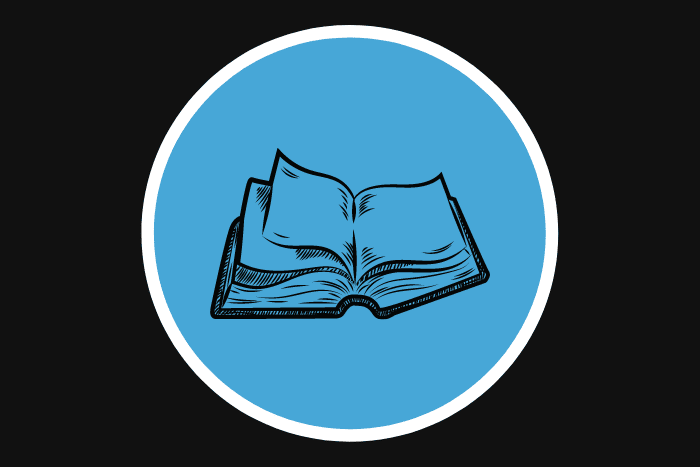When it comes to mood examples, sometimes it’s easy to pinpoint what you’re looking for.
For instance, are you watching a film that sends a shiver up your spine… or one that has you rolling with laughter? There’s a clear difference in mood.
But what if you’re studying a novel or poem? Pinning down “mood” can be tricky.
We’re going to explain what mood is, why it’s important, and how you can create grammatical mood in your writing. Then, we’ll look at different types drawn from literature, poetry, and pop culture.
Let’s begin!

Mood Definition
Mood, in writing, is the emotion that the author wants the reader to experience. You might think of it as the “feeling” of the work. The mood doesn’t necessarily stay the same throughout the whole of a piece — and can shift abruptly.
The mood is created through many different literary devices and techniques, particularly descriptions, imagery, and dialogue. It requires careful control from the writing on both the big-picture level of the work as a whole and on a sentence and word level, with the careful use of sensory words, well-chosen metaphors, and more.
Why Is Mood Important in Writing?
To understand why mood is so critical in writing, you need to think about why we read fiction (and poetry) at all. Ultimately, we want to feel something. We might want to feel intrigued, moved, nostalgic, or even scared.
The use of mood means that authors can:
Fully engage the reader
By creating a strong emotion, the author draws the reader into the story, making it almost impossible to stop turning the pages. They’ll care about the characters and what happens to them, because of what the author makes them feel.
Create a memorable story that stays with the reader long after it’s finished
Readers won’t necessarily remember the twists and turns of the plot, or even the names of all the characters … but they’ll remember how the book made them feel.
Play with or even defy common conventions
This can be risky, as if an author doesn’t quite pull it off, the story may fall flat. But by creating an unexpected mood — like a funny, silly mood for high fantasy or a dark, ominous mood for a story that seems light on the surface — the author can draw in readers who want something a bit different.
Enhance other aspects of their work
Perhaps a deceptively lighthearted mood will contrast starkly with the events of the novel, heightening the author’s message about the ills of society. Or maybe a wry and silly mood will make the dialogue and plot even funnier.
How to Create Mood in Writing: 3 Practical Tips
What if you want to create just the right mood in your own piece of writing? You can:
1. Pick telling details when writing descriptions
When describing a setting, it’s easy to get carried away in telling the reader everything.
But to create a strong sense of mood, you want to focus on a few details. Here’s an example from the opening of Erin Morgenstern’s The Night Circus, instantly evoking a mood of mystery, plus something a little dreamlike:
The towering tents are striped in white and black, no golds and crimsons to be seen. No color at all, save for the neighboring trees and the grass of the surrounding fields. Black-and-white stripes on grey sky; countless tents of varying shapes and sizes, with an elaborate wrought-iron fence encasing them in a colorless world.
2. Create the right rhythm for your sentences
Short, snappy sentences create a very different mood from long, leisurely ones. Here’s the start of Jim Butcher’s Storm Front, the first Dresden Files novel. The short sentences create a tense, expectant mood, as well as establishing Harry Dresden’s narrative voice.
I heard the mailman approach my office door, half an hour earlier than usual. He didn’t sound right. His footsteps fell more heavily, jauntily, and he whistled. A new guy. He whistled his way to my office door, then fell silent for a moment. Then he laughed.
3. Use imagery, metaphor, and simile
The careful use of imagery, including metaphor and simile, can be a powerful tool in establishing mood. Nick Hornby does this well in the opening scene of How to Be Good:
‘This. Rowing all the time. The silences. The bad atmosphere. All this … poison.’
Oh. That. Delivered as if the venom had somehow dripped into our marriage through a leaking roof, and he’d been meaning to fix it.‘
Examples of Mood from Literature, Poetry, and Pop Culture
Let’s take a look at some more detailed mood examples, from literature, poetry, and pop culture.
Examples of Mood in Literature

Oliver Twist, Charles Dickens (1837)
Occasionally, when there was some more than usually interesting inquest upon a parish child who had been overlooked in turning up a bedstead, or inadvertently scalded to death when there happened to be a washing-though the latter accident was very scarce, anything approaching to a washing being of rare occurrence in the farm-the jury would take it into their heads to ask troublesome questions, or the parishioners would rebelliously affix their signatures to a remonstrance. But these impertinences were speedily checked by the evidence of the surgeon, and the testimony of the beadle; the former of whom had always opened the body and found nothing inside (which was very probable indeed), and the latter of whom invariably swore whatever the parish wanted; which was very self-devotional.
On the surface, the tone of this passage is matter-of-fact and rather offhand and disinterested, with a streak of humor.
However, this strikes a horrible contrast with the subject matter: young children are being horribly badly neglected, even killed, at a local branch-workhouse.
Brighton Rock, Graham Greene (1938)
[Hale] showed his face to the crowd as it uncoiled endlessly past him, like a twisted piece of wire, two by two, each with an air of sober and determined gaiety. […] With immense labour and immense patience they extricated from the long day the grain of pleasure: this sun, this music, the rattle of the miniature cars, the ghost train diving between the grinning skeletons under the Aquarium promenade, the sticks of Brighton rock, the paper sailors’ caps.
The mood here isn’t cheerful, as we might expect from a sunny holiday at the seaside.
Instead, it’s drab and dismal — with an undercurrent of something even darker (note the “grinning skeletons” and the simile of “like a twisted piece of wire”).
On Chesil Beach, Ian McEwan (2007)
They had just sat down to supper in a tiny sitting room on the first floor of a Georgian inn. In the next room, visible through the open door, was a four-poster bed, rather narrow, whose bedcover was pure white and stretched startlingly smooth, as though by no human hand. Edward did not mention that he had never stayed in a hotel before, whereas Florence, after many trips as a child with her father, was an old hand. Superficially, they were in fine spirits.
There’s a hint already, in these lines from the first page, of something oppressive and even disturbing in the mood of On Chesil Beach.
The description of the bed is unsettling, and the careful choice of words — particularly “superficially” — creates tension.
Examples of Mood in Poetry

Stopping by Woods on a Snowy Evening, Robert Frost (1923)
The woods are lovely, dark and deep,
But I have promises to keep,
And miles to go before I sleep,
And miles to go before I sleep.
These closing lines of Frost’s poem evoke a sense of longing — “the woods are lovely, dark and deep” — but also of resolve (“promises to keep”).
Still I Rise, Maya Angelou (1978)
You may write me down in history
With your bitter, twisted lies,
You may tread me in the very dirt
But still, like dust, I’ll rise.
An uplifting, spirited, indefatigable mood resonates in these lines — and throughout this poem by Maya Angelou.
If, Rudyard Kipling (1910)
If you can keep your head when all about you
Are losing theirs and blaming it on you;
If you can trust yourself when all men doubt you,
But make allowance for their doubting too
This famous poem by Rudyard Kipling is immensely popular, in part because of the inspiring, motivational — although challenging — mood it creates.
Examples of Mood in Pop Culture
One of Us is Lying (TV)
For most of this clip, the students are bored, frustrated, and a bit sarcastic — but for the viewer, the dominant mood is curiosity: several things are said that we don’t have the full context for. There’s a dramatic mood shift from the 5:18 mark onwards.
Ethel & Ernest, Raymond Briggs (1998)
Raymond Briggs’ graphic novel about his parents’ marriage and his own upbringing is sweetly funny, not overly sentimental but engagingly nostalgic about life in Britain from around 1930 – 1970, both in the dialogue and the artwork.
Encanto
The tone in this clip is quite matter-of-fact (“Oh, Mirabel didn’t get one”) and also funny in many ways (“maybe your gift is being in denial”) — but there’s also something poignant and sad about Mirabel’s lack of a gift.
Mood vs. Tone
It’s easy to confuse mood and tone, but these are two distinct concepts.
Mood is how the author wants the reader to feel, as a result of reading (or watching) their work. The mood of a piece might be funny, sad, creepy, cheerful, nostalgic, curious, and so on.
Tone is how the author — or, in fiction, the narrator — feels about their subject matter. This will often be closely related to the mood of the piece — but there can also be a disconnect.
Get a more in-depth look at tone here: 17 Tone Examples From Writing (+ Definition & Types of Tone)
Using Mood Examples to Deepen Your Writing (& Reading)
Next time you’re reading, pay attention to how you’re feeling.
Are you drawn to the book because of the mood it evokes?
You may also want to pay attention to your physical reactions: a story might send your heart racing, or make you laugh — or cry.
Ready to go further?
Look up the full pieces that we’ve used as mood examples to see how the author carefully builds, sustains, and changes the mood of a piece. Copy down specific words, phrases, and sentences that work to build the mood. That way, you’ll gain a deep understanding of how mood works in writing.
The post 12 Mood Examples From Literature (+ Definition & Writing Tips) appeared first on Smart Blogger.
from Smart Blogger https://ift.tt/Gb1fxCp
via IFTTT
No comments:
Post a Comment